- Joined
- Jun 17, 2021
- Messages
- 2,326
- Points
- 488

My scratch built model( using Model Shipways Pride II hull plans) of the "Chasseur" Baltimore Clipper, built by Thomas Kemp of Baltimore, in her 1815 brigantine rig reconfiguration under the command of Thomas Boyle.
At 120' on deck she was one of the biggest of her type. she was dubbed by the Baltimore press as the original "Pride of Baltimore" because of her victory in the only battle between Baltimore Clippers. The other being the "St. Lawrence", a schooner rigged ship of the same type, captured and used by the British as an armed dispatch carrier out of Cuba.
The model is depicted close hauled with acrylic coated fabric sails with wire bolt ropes to hold the luff shape. The taff rail had been cut away by Capt. Boyle to allow long chase guns to be elevated to such a degree, as to dissuade a British warship that was gaining on them to give up the pursuit. A tactic that proved successful by the resourceful and imaginative Capt. Boyle and is so depicted in the model.
The sail plan is from those by G. Peter Boudreau and Thomas Gilmer, purely speculative. as is my rendering of the model, only having contemporary written resources to go by. No period depictions of the ship exist that I know of.
She ,under the command of Captain Boyle, is regarded as the most successful American Privateer of the War of 1812.
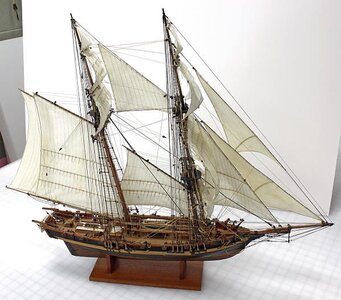
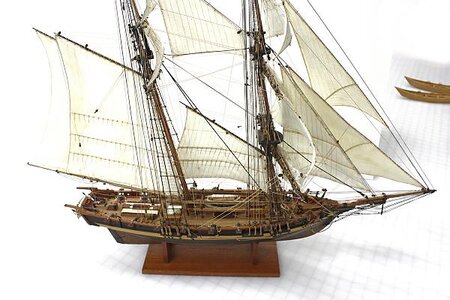
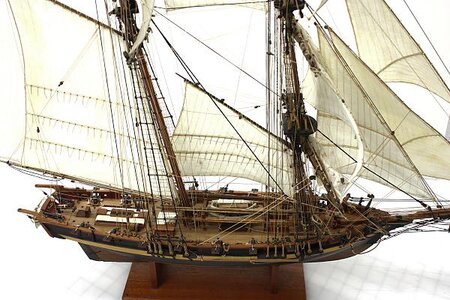
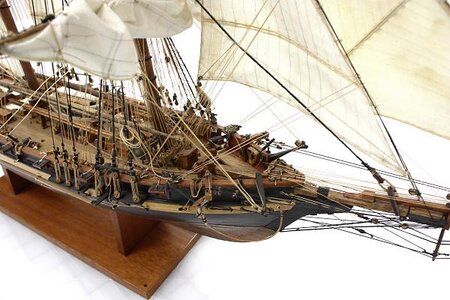
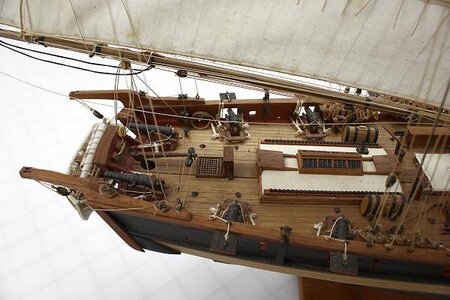
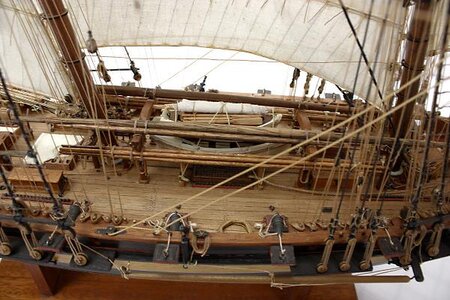
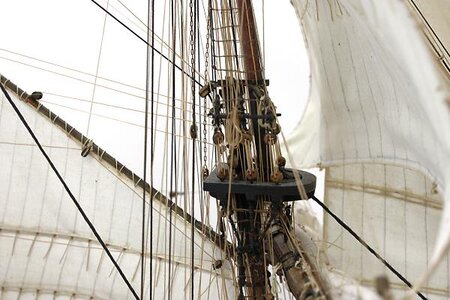
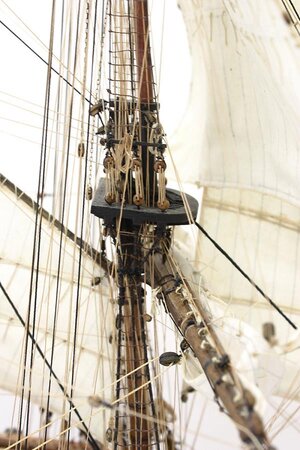
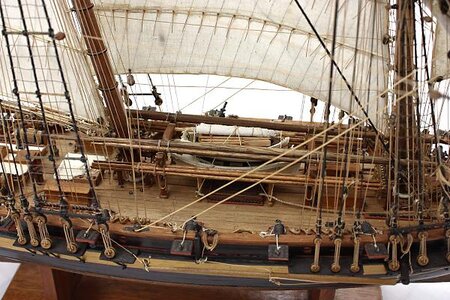
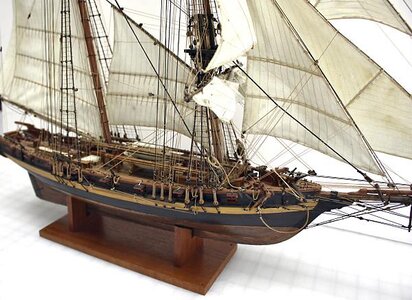
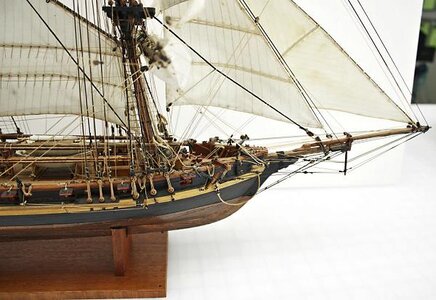
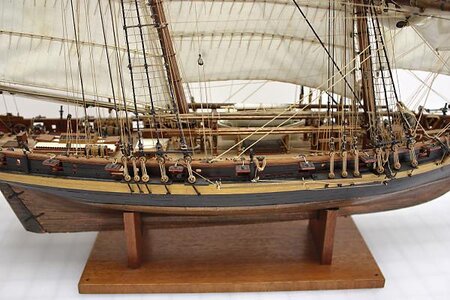
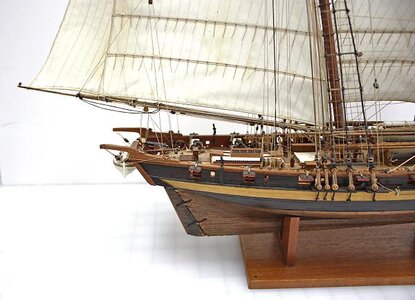
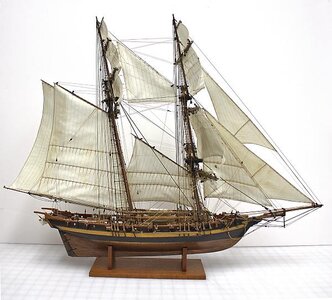
At 120' on deck she was one of the biggest of her type. she was dubbed by the Baltimore press as the original "Pride of Baltimore" because of her victory in the only battle between Baltimore Clippers. The other being the "St. Lawrence", a schooner rigged ship of the same type, captured and used by the British as an armed dispatch carrier out of Cuba.
The model is depicted close hauled with acrylic coated fabric sails with wire bolt ropes to hold the luff shape. The taff rail had been cut away by Capt. Boyle to allow long chase guns to be elevated to such a degree, as to dissuade a British warship that was gaining on them to give up the pursuit. A tactic that proved successful by the resourceful and imaginative Capt. Boyle and is so depicted in the model.
The sail plan is from those by G. Peter Boudreau and Thomas Gilmer, purely speculative. as is my rendering of the model, only having contemporary written resources to go by. No period depictions of the ship exist that I know of.
She ,under the command of Captain Boyle, is regarded as the most successful American Privateer of the War of 1812.














Last edited:






